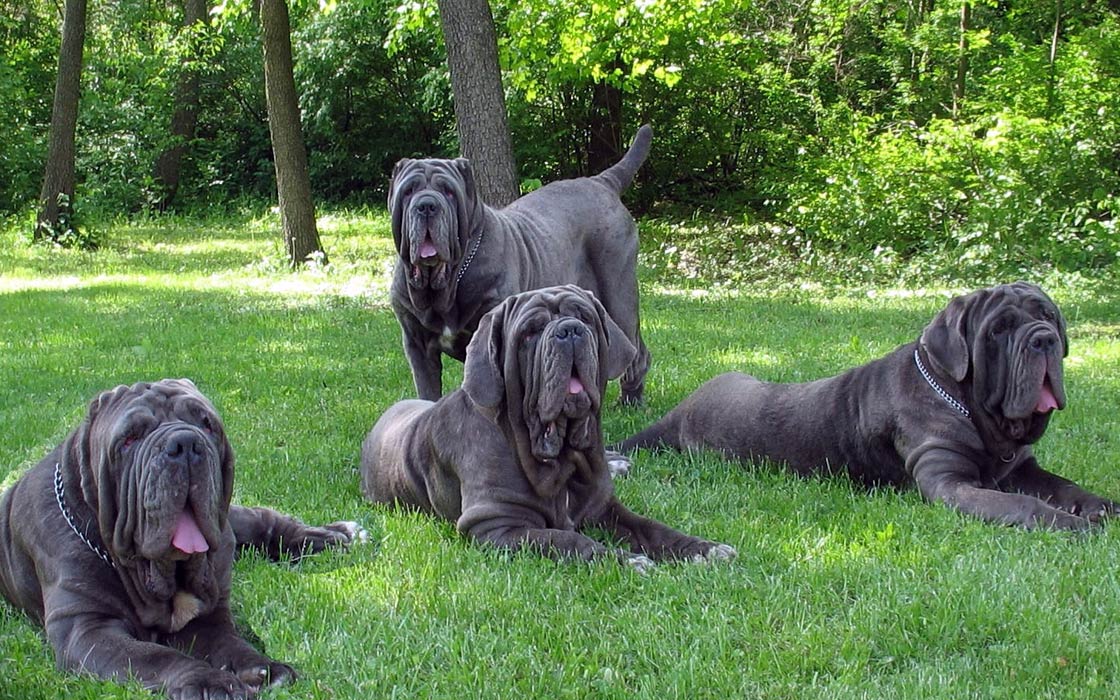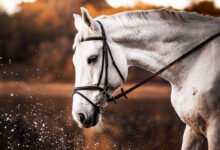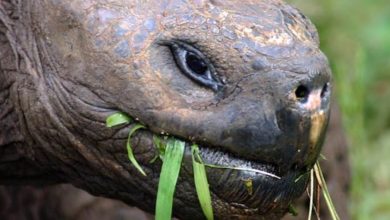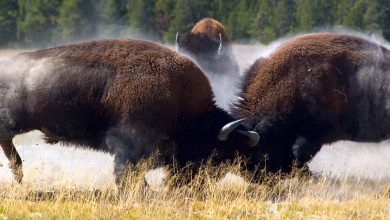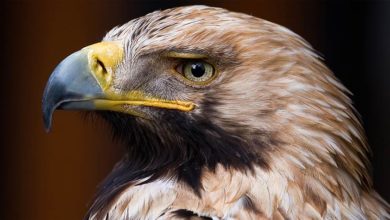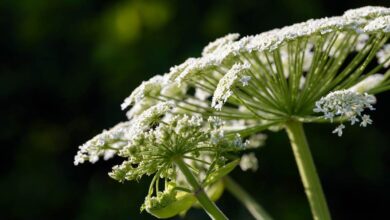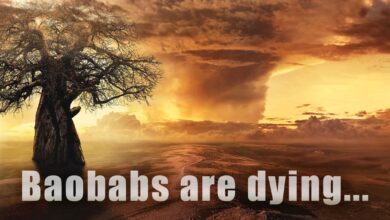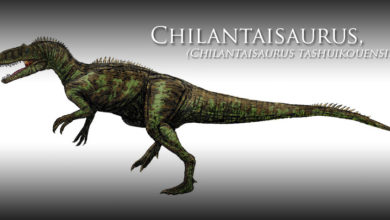The Heart and Soul of the Neapolitan Mastiff
The Neapolitan Mastiff is a majestic and imposing breed that has captivated dog lovers around the world with its incredible size and striking appearance. With its thick wrinkles, massive head, and powerful build, this breed is undoubtedly one of the most impressive dogs you will ever lay your eyes on. Despite its imposing size and strength, the Neapolitan Mastiff is a loyal and loving companion that is fiercely devoted to its family. With a history that dates back over 2000 years, this breed has been a loyal guardian and protector for centuries, earning a reputation as one of the most trustworthy and dependable breeds around.
Originally bred in the city of Naples, Italy, the Neapolitan Mastiff was used to guard properties and homes, as well as to protect livestock and hunt game. Over the years, this breed has developed a reputation as a fearless and tenacious guardian, and is considered one of the best watchdogs in the world.
But there is more to the Neapolitan Mastiff than just its imposing size and protective nature. This breed is also known for its gentle and affectionate temperament, and makes a wonderful family pet for those who can provide it with the love, attention, and exercise it needs to thrive.
In recent years, the Neapolitan Mastiff has gained popularity around the world, thanks in part to its impressive appearance and its loyal and loving personality. Despite its size, this breed is a great choice for families looking for a loyal and devoted companion, and is sure to make a lasting impression on anyone who meets it.
So if you’re looking for a breed that is as impressive as it is loving, the Neapolitan Mastiff may be just the dog you’ve been searching for. With its impressive size, striking appearance, and loyal personality, this breed is sure to capture your heart and make a lasting impression on you and your family.
FCI classification
- Group 2 Pinscher and Schnauzer, Molossoid breeds and Swiss Mountain- and Cattle Dogs
- Section 2:1 Molossoid breeds, Mastiff type
- Without working trial
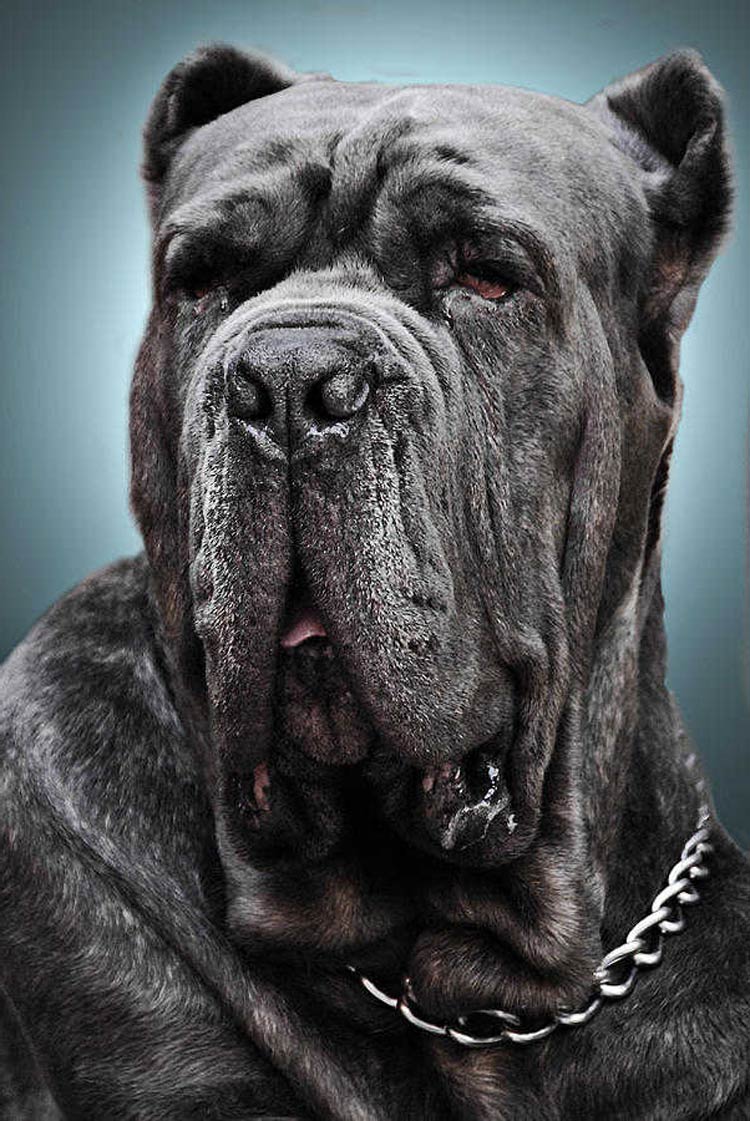
Basic Facts About the Neapolitan Mastiff
The Neapolitan Mastiff is a large and powerful breed of dog that typically weighs between 50 and 70 kilograms (110 to 154 pounds) and stands around 60 to 75 centimeters (24 to 30 inches) tall at the shoulder. These dogs have a thick, heavy coat that can range in color from black, blue, and mahogany to fawn and brindle.
In addition to their impressive size, Neapolitan Mastiffs are known for their distinctive wrinkled appearance, which gives them a unique and striking appearance. Their large, droopy jowls and deeply furrowed brow give them a serious and imposing expression that is hard to forget.
Despite their imposing appearance, Neapolitan Mastiffs are known for their gentle and affectionate nature, and make wonderful companions for families that can provide them with the love and attention they need. They are loyal and protective dogs that will go to great lengths to protect their loved ones, making them excellent watchdogs and guard dogs.
Overall, the Neapolitan Mastiff is a fascinating breed that has captured the hearts of dog lovers around the world with its impressive size, unique appearance, and loving personality.
Name etymology
The Neapolitan Mastiff gets its name from its place of origin, Naples, Italy. The breed is also sometimes referred to as the Mastino Napoletano in its native country. The word “Mastiff” refers to the breed’s large size and muscular build, while “Neapolitan” simply denotes its place of origin.
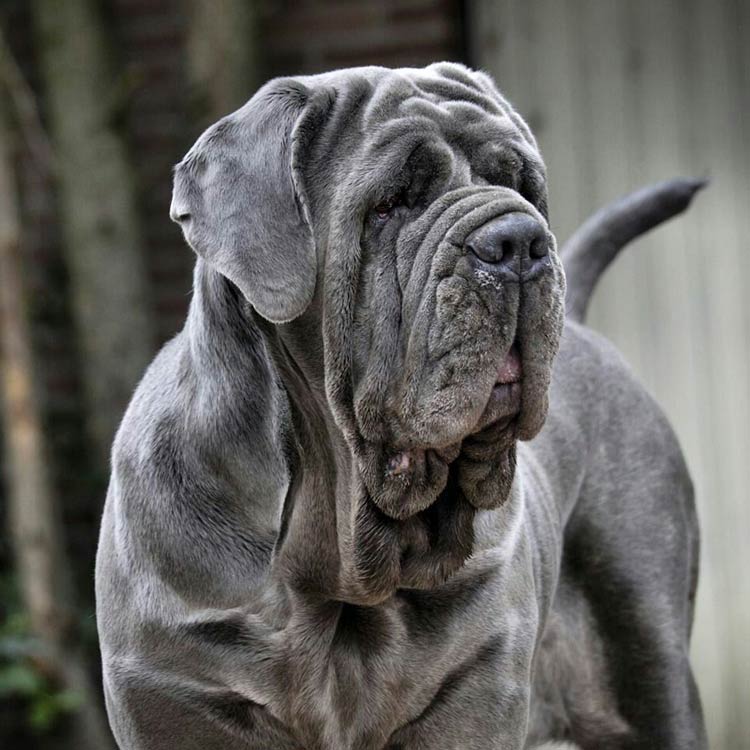
History of the breed
The history of the Neapolitan Mastiff can be traced back over 2000 years to the Molossus dog, an ancient breed that was used as a war dog by the Romans. These dogs were known for their impressive size, strength, and loyalty, and were prized for their ability to protect their owners and their property.
Over time, the Molossus dog was bred with other large breeds to create the Mastino, a powerful and imposing breed that was used for guarding and hunting. The Mastino became very popular in Italy, particularly in the region of Naples, where it was used to guard properties, homes, and livestock.
The modern Neapolitan Mastiff as we know it today was developed in the 1940s and 1950s, when breeders in Italy began to selectively breed Mastinos for size, strength, and temperament. The breed quickly gained popularity in Europe and was recognized by the Italian Kennel Club in 1949.
In the United States, the Neapolitan Mastiff was first recognized by the American Kennel Club in 2004. Since then, the breed has gained a dedicated following and is now a popular choice for families looking for a loyal and protective companion.
Throughout its history, the Neapolitan Mastiff has remained true to its roots as a loyal and protective guardian. Today, the breed is valued for its impressive size, striking appearance, and loving personality, and continues to be a beloved companion and protector for families around the world.
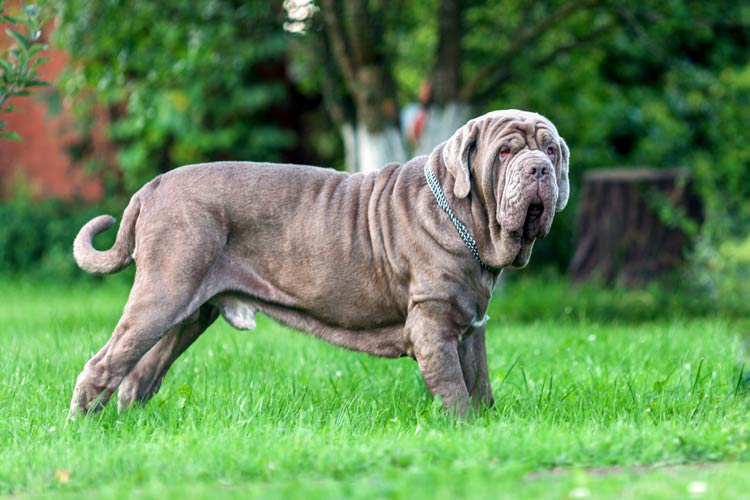
Characteristics
The Neapolitan Mastiff is a large and powerful breed of dog with a distinctive and imposing appearance. Here are some of the key characteristics of the breed:
Appearance
- The Neapolitan Mastiff has a thick and heavyset build, with a broad chest, muscular shoulders, and a powerful neck.
- Their head is massive and square-shaped, with deep-set eyes and large, droopy jowls that give them a wrinkled and imposing appearance.
- The breed’s skin is loose and wrinkled, particularly around the neck and face, which helps to protect them in a fight.
- They have a short, coarse coat that lies close to the skin, and is typically black, blue, mahogany, fawn, or brindle in color.
Size
- The Neapolitan Mastiff is a large breed of dog that typically weighs between 50 and 70 kilograms (110 to 154 pounds).
- They stand around 60 to 75 centimeters (24 to 30 inches) tall at the shoulder.
Temperament
- Despite their imposing appearance, Neapolitan Mastiffs are known for their gentle and affectionate nature, and make wonderful companions for families that can provide them with the love and attention they need.
- They are loyal and protective dogs that will go to great lengths to protect their loved ones, making them excellent watchdogs and guard dogs.
- However, they can be stubborn and strong-willed, so they require firm and consistent training from a young age.
The Neapolitan Mastiff is a fascinating breed with a striking appearance and a loving personality. They make excellent guardians and companions for families that are able to provide them with the exercise, training, and attention they require.
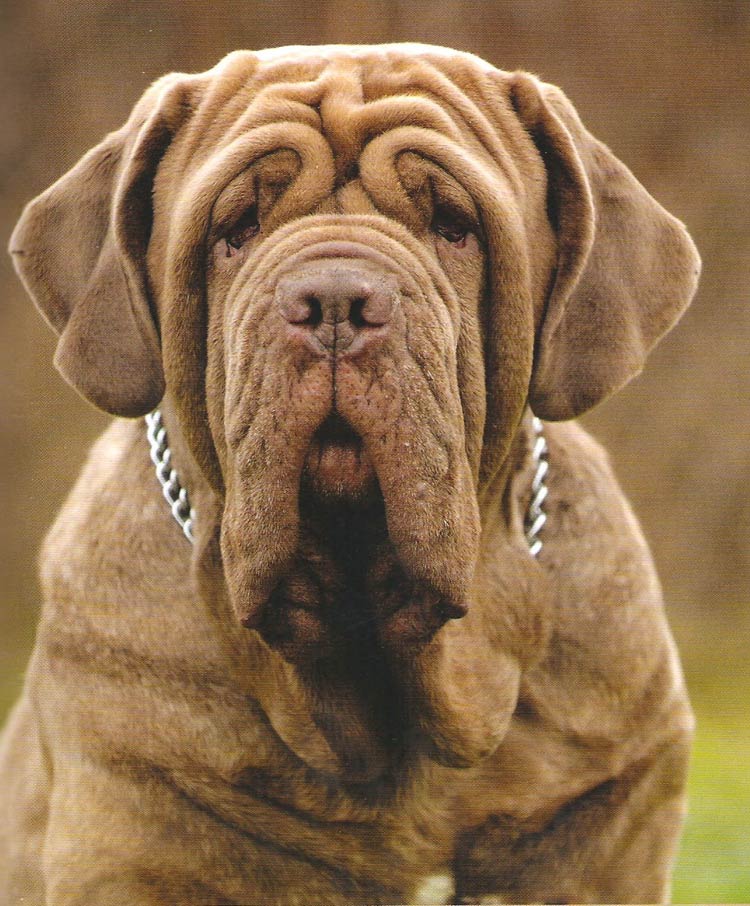
Behavior
The Neapolitan Mastiff is known for its calm and patient demeanor, making them great companions for families with children. They are loyal and protective dogs that will go to great lengths to protect their loved ones, making them excellent watchdogs and guard dogs. Despite their imposing appearance, they are gentle and affectionate with their family and thrive on human companionship.
However, it’s important to note that the Neapolitan Mastiff can be stubborn and strong-willed, so they require consistent and firm training from a young age. Socialization is also important to ensure they are comfortable around new people and animals, as they can be wary of strangers.
These dogs have a moderate activity level, and they enjoy daily exercise and playtime. They don’t require a lot of exercise, but they do need a daily walk and some playtime in a secure yard. Because of their size, they are not recommended for apartment living and require a large living space.
The Neapolitan Mastiff is a loyal and loving companion that requires a firm but gentle hand in training and plenty of socialization. With the right care and attention, they make wonderful additions to families looking for a devoted and protective companion.
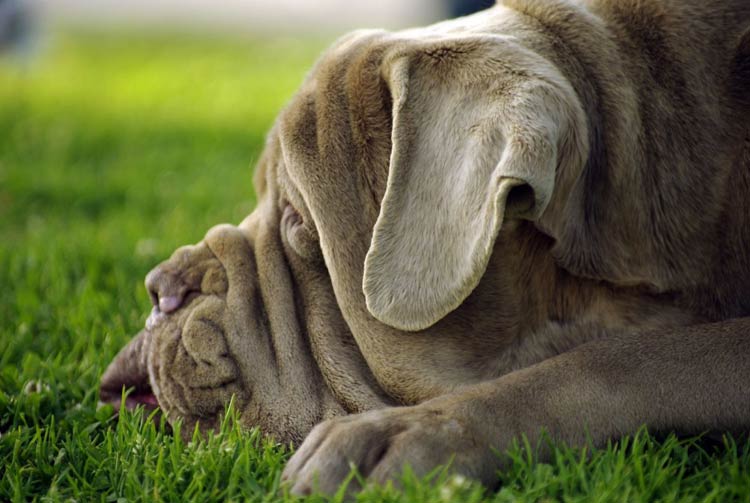
Temperament
The Neapolitan Mastiff has a temperament that is both calm and patient, making them great companions for families with children. They are known to be loyal and protective dogs that will go to great lengths to protect their loved ones, making them excellent watchdogs and guard dogs. Despite their imposing appearance, they are gentle and affectionate with their family and thrive on human companionship.
While the breed is generally friendly and loyal to their family, they can be wary of strangers and can be protective of their territory. Early socialization is important to ensure they are comfortable around new people and animals.
It’s worth noting that the Neapolitan Mastiff can be stubborn and strong-willed, so they require consistent and firm training from a young age. They also have a moderate activity level, and they enjoy daily exercise and playtime.
The Neapolitan Mastiff is a loyal and protective breed that requires a confident and experienced owner who can provide them with proper socialization and training. They make excellent watchdogs and loyal companions for those who can provide them with the care and attention they need.
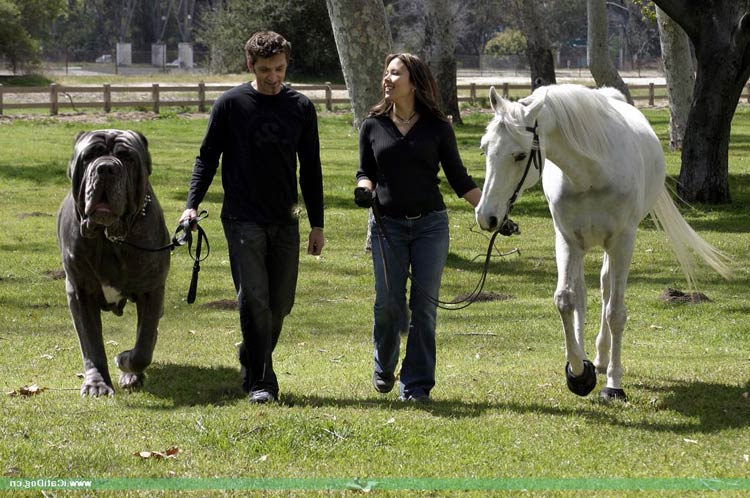
Recommended types of training for this breed
The Neapolitan Mastiff is a strong and powerful breed, so training from a young age is essential to establish boundaries and ensure they are well-behaved as adults. Here are some recommended types of training for this breed:
- Obedience training
Obedience training is important to establish boundaries and ensure that your Neapolitan Mastiff understands basic commands such as “sit,” “stay,” and “come.” This type of training can help to keep your dog safe in potentially dangerous situations and make them more manageable in public settings. - Socialization
Early socialization is important to ensure that your Neapolitan Mastiff is comfortable around people and other animals. This type of training can help to prevent fear and aggression towards strangers and other dogs, and make them more confident in new situations. - Leash training
Leash training is important for Neapolitan Mastiffs due to their size and strength. They need to be taught to walk calmly on a leash to prevent them from pulling and potentially injuring their handler. - Guard dog training
Neapolitan Mastiffs are natural guard dogs, and with proper training, they can excel in this role. Guard dog training can help to develop their natural protective instincts and teach them to alert their owners of potential threats. - Positive reinforcement training
Positive reinforcement training is an effective way to train a Neapolitan Mastiff. This type of training involves rewarding good behavior with treats, praise, and attention, rather than punishing bad behavior. It can help to establish a positive relationship between the dog and their owner and make training more enjoyable for both.
Neapolitan Mastiffs require consistent and firm training from a young age, and owners should be confident and experienced in handling large, powerful breeds. With the right training and socialization, Neapolitan Mastiffs can make loyal and protective companions for those who can provide them with the care and attention they need.
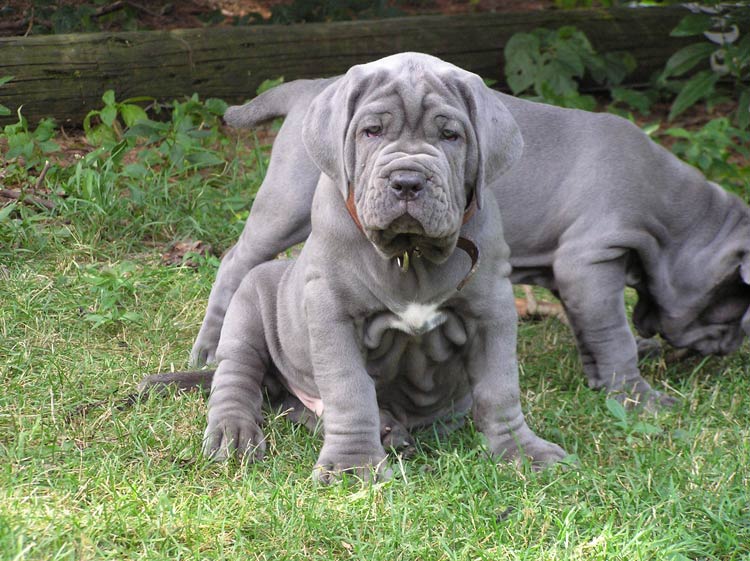
Health condition
Like all breeds, the Neapolitan Mastiff is prone to certain health conditions. Here are some common health concerns for the breed:
- Hip and elbow dysplasia:
This is a genetic condition where the hip and elbow joints do not develop properly, leading to arthritis and joint pain. Neapolitan Mastiffs are prone to this condition due to their large size and weight. - Bloat:
Bloat is a condition where the stomach fills with gas and twists, cutting off blood flow to vital organs. This is a life-threatening condition and requires immediate veterinary attention. Neapolitan Mastiffs are prone to this condition due to their deep chests. - Skin issues:
The Neapolitan Mastiff has loose skin, which can lead to skin issues such as infections, hot spots, and allergies. Regular grooming and skin care are important to prevent these issues. - Eye problems:
Neapolitan Mastiffs can be prone to eye issues such as cherry eye, entropion, and ectropion, which can cause discomfort and require surgical correction. - Heart problems:
Some Neapolitan Mastiffs may be prone to heart conditions such as dilated cardiomyopathy, which can lead to heart failure.
It is important to note that not all Neapolitan Mastiffs will develop these health conditions, and many can live long and healthy lives with proper care and attention. Regular veterinary check-ups and preventative care, such as proper nutrition and exercise, can help to minimize the risk of these health concerns. Potential owners should do their research and work with a reputable breeder who can provide information on the health history of their dogs.
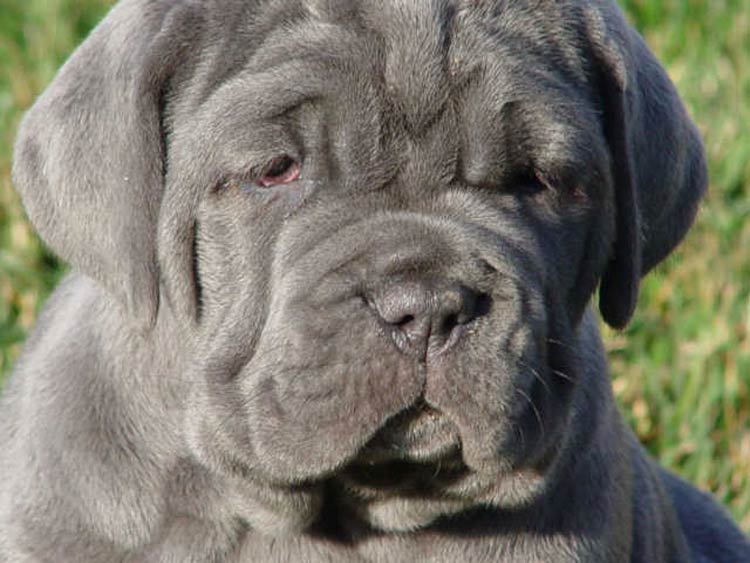
Diet
A balanced and nutritious diet is essential for the health and well-being of any dog, and the Neapolitan Mastiff is no exception. Here are some dietary recommendations for this breed:
- High-quality dog food
Neapolitan Mastiffs should be fed high-quality dog food that is appropriate for their age, weight, and activity level. Look for a dog food that lists a high-quality protein source as the first ingredient, and avoid dog foods that contain fillers or artificial ingredients. - Controlled feeding
Due to their large size and tendency towards obesity, Neapolitan Mastiffs should be fed controlled portions of food. Talk to your veterinarian to determine the appropriate portion sizes for your dog, and avoid overfeeding or free-feeding. - Limited treats
While treats can be a great way to reward your Neapolitan Mastiff, they should be given in moderation. Excessive treats can lead to obesity and other health issues. - Hydration
Neapolitan Mastiffs require plenty of fresh, clean water to stay hydrated. Make sure your dog has access to water at all times, and change the water bowl regularly. - Special dietary considerations
Some Neapolitan Mastiffs may have dietary restrictions or special dietary considerations due to health conditions or allergies. Talk to your veterinarian if you have any concerns about your dog’s diet.
A balanced and nutritious diet is essential for the health and well-being of the Neapolitan Mastiff. Owners should work with their veterinarian to determine the appropriate diet for their dog, and ensure that their dog is getting the proper nutrition and hydration they need to thrive.
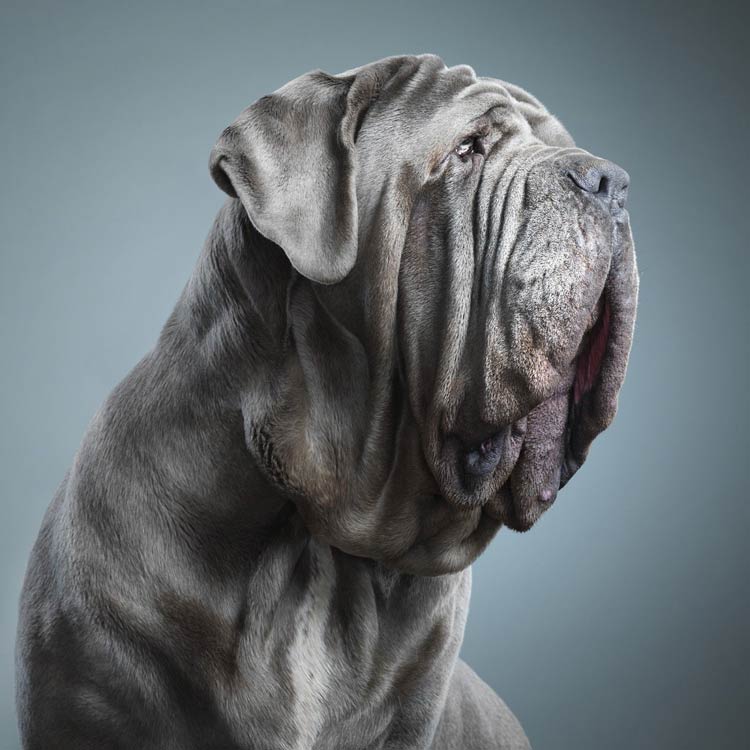
Reproduction and parenting
Reproduction in Neapolitan Mastiffs is similar to other breeds of dogs. They usually reach sexual maturity between 6 and 12 months of age, with females typically entering their first heat cycle between 6 and 12 months, and males becoming sexually active between 6 and 18 months.
When it comes to parenting, Neapolitan Mastiffs are known to be devoted and protective of their puppies. They have a strong maternal instinct and will care for their puppies with great attention and affection. However, it’s important to note that due to their large size and strength, Neapolitan Mastiffs require careful supervision when around young children or other pets.
If you’re considering breeding your Neapolitan Mastiff, it’s important to work with a reputable breeder who can provide guidance and support throughout the breeding process. Breeding should only be done with the goal of improving the breed and producing healthy, well-tempered puppies. Owners should also be prepared for the financial and emotional responsibilities that come with breeding and raising a litter of puppies. It’s important to provide proper veterinary care and socialization for both the mother and puppies, and to carefully screen potential adopters to ensure that the puppies will be going to loving and responsible homes.
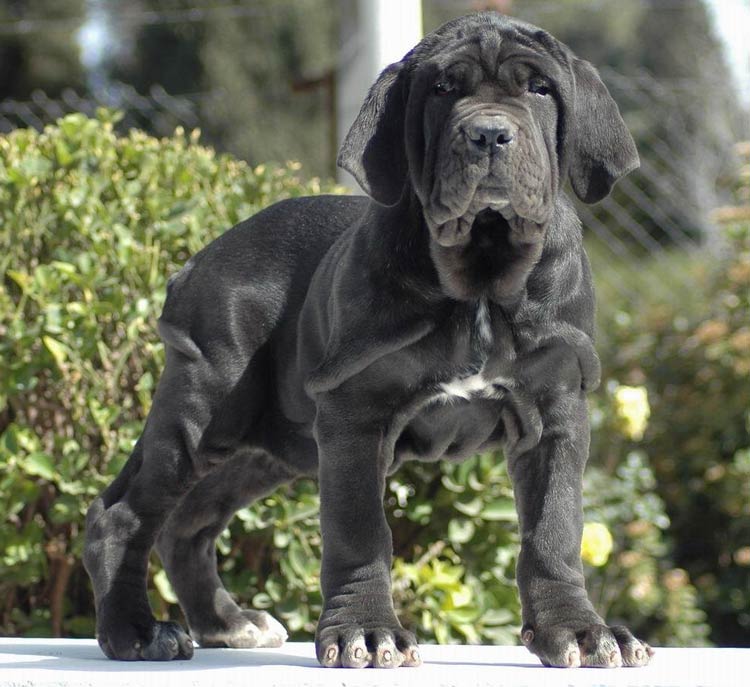
Interactions with humans
The Neapolitan Mastiff is known for being a loyal and affectionate breed, and they often form strong bonds with their human family members. They are typically very protective of their home and family, and can be wary of strangers. Early socialization and training can help to ensure that they are well-adjusted and comfortable around new people and situations.
Neapolitan Mastiffs thrive on attention and affection from their owners, and they often enjoy spending time with their family members. However, due to their large size and strength, it’s important to supervise interactions between Neapolitan Mastiffs and young children, as well as other pets. They can be gentle and patient with children and other animals when socialized properly, but their size and strength can also make them unintentionally rough or overwhelming.
Training and socialization are important for any breed of dog, and the Neapolitan Mastiff is no exception. They are intelligent and eager to please, and they respond well to positive reinforcement training methods. Consistent and patient training can help to prevent unwanted behaviors and establish a strong bond between the dog and their owner.
Overall, the Neapolitan Mastiff is a loyal and affectionate breed that can make a great companion for the right family. They require proper socialization and training to ensure that they are well-adjusted and comfortable in a variety of situations, and they thrive on attention and affection from their owners.

Population
The population of Neapolitan Mastiffs is difficult to estimate, as there is no centralized organization that tracks the breed’s numbers. However, they are considered to be a relatively rare breed, both in the United States and globally. In the United States, the Neapolitan Mastiff is ranked as the 110th most popular breed by the American Kennel Club (AKC).
Due to their large size and strong protective instincts, the Neapolitan Mastiff is not a breed that is well-suited for every household. They require a significant amount of space, exercise, and socialization, as well as a dedicated and experienced owner who is able to handle their size and strength.
If you’re considering adding a Neapolitan Mastiff to your family, it’s important to do your research and ensure that the breed is a good fit for your lifestyle and home environment. Working with a reputable breeder or rescue organization can help to ensure that you are getting a healthy and well-socialized dog.
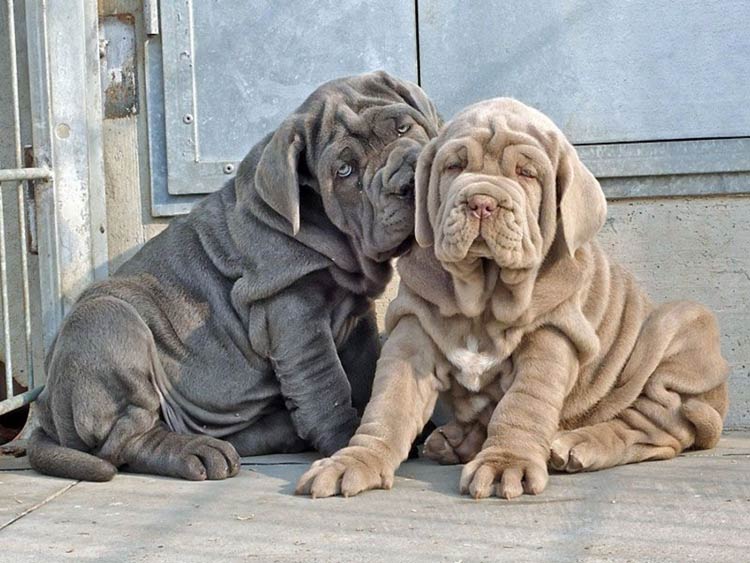
Detailed data / dimensions (size)
The Neapolitan Mastiff
- Height at the withers:
- Males: 64-75 cm (25-29.5 inches) / max. 79 cm / 31 in
- Females: 58-68 cm (23-27 inches)
- Weight:
- males: 60-70 kg (132-154 pounds)
- females: 50-60 kg (110-132 pounds)
- Lifespan: 8-10 years on average, although some Neapolitan Mastiffs may live longer with proper care and attention
- Number of puppies: Neapolitan Mastiffs typically have litters of 6-10 puppies, although larger or smaller litters are possible
- Max speed: the Neapolitan Mastiff is not a particularly fast breed, and their maximum speed is likely to be around 20-25 miles per hour (32-40 km/h). However, they are not typically used for activities that require speed, such as racing or agility competitions.
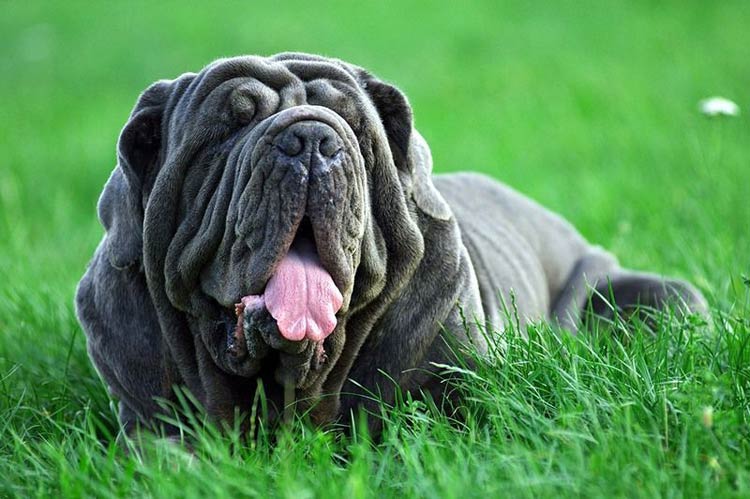
The Neapolitan Mastiff in culture
The Neapolitan Mastiff has made appearances in various forms of popular culture, showcasing its imposing appearance and loyal nature. Here are a few examples:
- Movies
The breed has been featured in a number of movies, including “Turner & Hooch” (1989), in which the titular character is a Neapolitan Mastiff who helps solve crimes with his human partner; and “The Last Emperor” (1987), in which a pair of Neapolitan Mastiffs guard the imperial palace in Beijing. - Television
The Neapolitan Mastiff has also appeared in several television shows, including “The Dog Whisperer with Cesar Millan,” where they have been featured as an example of a breed with strong protective instincts. - Music
The Neapolitan Mastiff has also made an appearance in music, as the subject of the song “Mastino Napoletano” by Italian singer-songwriter Eugenio Finardi. - Literature
The breed has been featured in several works of literature, including “Fluke” by James Herbert, in which the main character is reincarnated as a Neapolitan Mastiff; and “Dog Stories” by James Herriot, in which the author writes about his experiences treating a Neapolitan Mastiff named Gyp.
The Neapolitan Mastiff’s striking appearance and loyal temperament have made it a popular choice for various forms of popular culture, and its reputation as a loving and protective breed has made it a beloved companion for many owners.
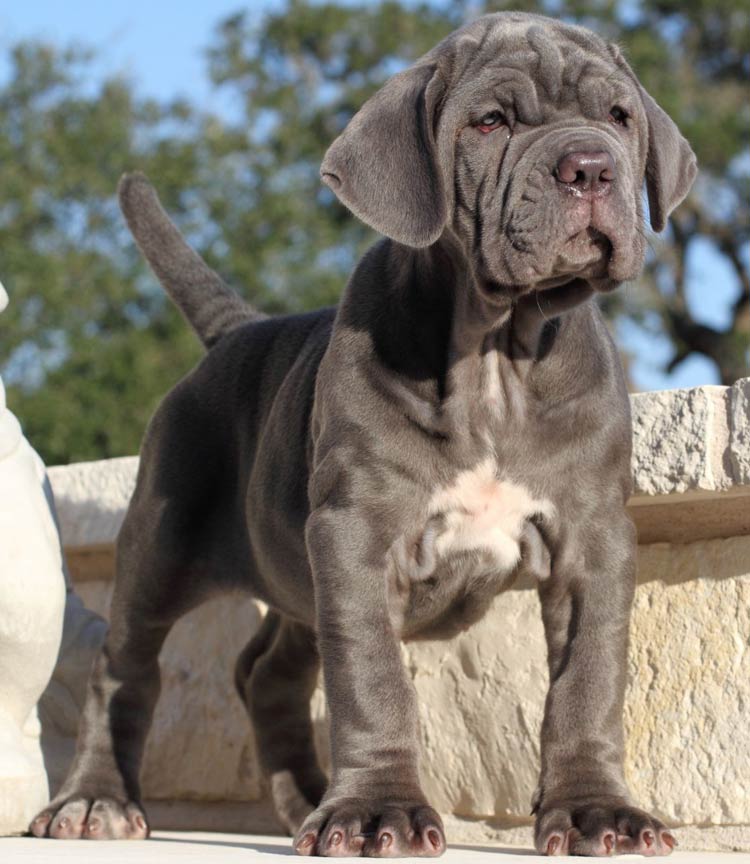
The Neapolitan Mastiff in movies
The Neapolitan Mastiff has appeared in a number of movies over the years, showcasing its imposing size and loyal nature. Here are a few notable examples:
- “The Last Emperor” (1987): In this biographical drama film, a pair of Neapolitan Mastiffs guard the imperial palace in Beijing during the reign of China’s last emperor, Puyi. The dogs are depicted as fierce and loyal protectors, reflecting the breed’s reputation for being strong and fearless.
- “Harry Potter and the Sorcerer’s Stone” (2001): While the Neapolitan Mastiff doesn’t play a major role in this popular fantasy film, it does make a brief appearance in a scene where the main character Harry Potter is shopping for school supplies in Diagon Alley. The dog is shown sitting outside a shop, staring intently at Harry and his friends as they walk past.
The Neapolitan Mastiff’s striking appearance and loyal temperament have made it a popular choice for filmmakers looking to add a memorable canine character to their movies. Whether portrayed as a fierce protector or a lovable companion, the breed’s presence on the big screen has helped to raise awareness of its unique qualities and endearing personality.
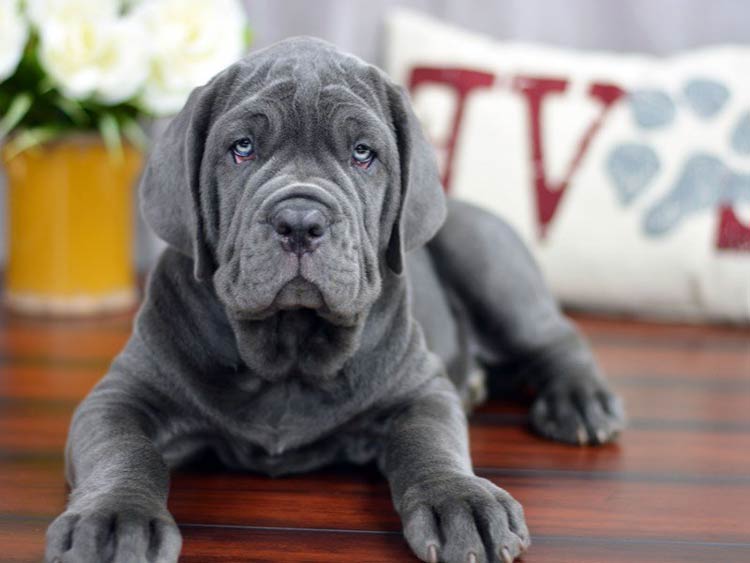
Interesting facts about the Neapolitan Mastiff
- Ancient breed
The Neapolitan Mastiff is one of the oldest breeds of dog in the world, with a history that can be traced back to ancient Rome. The breed was originally used as a guard dog and war dog, and its size and strength made it well-suited to these roles. - Wrinkled skin
The Neapolitan Mastiff is known for its distinctive wrinkled skin, which helps to protect it from injuries during fights with other dogs or predators. The wrinkles also give the breed a unique appearance that sets it apart from other dogs. - Rare breed
Despite its long history, the Neapolitan Mastiff is a relatively rare breed, with only a few thousand registered with breed organizations around the world. This rarity makes them a prized and valuable breed for those who own and breed them. - Good with kids
Despite their intimidating size and appearance, Neapolitan Mastiffs are generally good with children and make excellent family pets. They are patient, loyal, and protective, and can be very gentle with kids when properly trained and socialized. - Drooling
Due to their wrinkled skin, Neapolitan Mastiffs are prone to drooling and slobbering, which can be a turn-off for some potential owners. However, for those who love the breed, this is just part of their unique charm. - Slow to mature
Neapolitan Mastiffs are slow to mature compared to other breeds, often taking up to three years to reach their full size and strength. This means that they require extra care and attention during their early years to ensure they develop properly. - Short lifespan
Unfortunately, Neapolitan Mastiffs have a relatively short lifespan compared to other breeds, with an average lifespan of just 8-10 years. This is due in part to their large size and weight, which puts extra strain on their bodies and can lead to health problems over time.
The Neapolitan Mastiff is a fascinating breed with a long history and unique appearance. While they may not be the best fit for every owner due to their size and health concerns, for those who appreciate their loyal nature and distinctive wrinkles, they can make wonderful and rewarding companions.
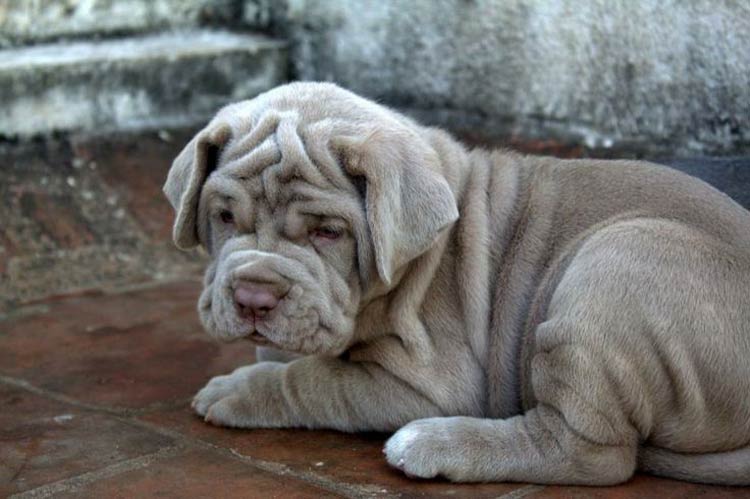
Q&A (questions and answers) about the Neapolitan Mastiff
Q: What is the average size of a Neapolitan Mastiff?
A: The average height at the withers is 60-75 cm (24-30 inches) for males and 56-68 cm (22-27 inches) for females. The average weight is 50-70 kg (110-150 pounds) for males and 40-60 kg (90-130 pounds) for females.
Q: Are Neapolitan Mastiffs good family pets?
A: Yes, Neapolitan Mastiffs can make excellent family pets if they are properly trained and socialized. They are loyal, patient, and protective, and can be very gentle with children.
Q: What kind of temperament do Neapolitan Mastiffs have?
A: Neapolitan Mastiffs are known for their calm and loyal temperament. They can be protective of their family and property, but are generally not aggressive towards strangers or other animals.
Q: Do Neapolitan Mastiffs require a lot of exercise?
A: Neapolitan Mastiffs do not require a lot of exercise, but they do need regular walks and some room to stretch their legs. They are generally low-energy dogs and are content with a moderate amount of activity.
Q: Are Neapolitan Mastiffs easy to train?
A: Neapolitan Mastiffs can be stubborn and independent, which can make them challenging to train. However, with patience, consistency, and positive reinforcement techniques, they can be trained to be well-behaved and obedient.
Q: What kind of health problems are common in Neapolitan Mastiffs?
A: Neapolitan Mastiffs are prone to certain health problems, including hip dysplasia, bloat, heart problems, and skin infections. Regular veterinary checkups and preventative care can help to minimize these risks.
Q: What kind of diet is recommended for Neapolitan Mastiffs?
A: Neapolitan Mastiffs should be fed a high-quality, balanced diet that is appropriate for their size and energy level. It is important to avoid overfeeding them, as they can easily become overweight.
Q: Are Neapolitan Mastiffs good guard dogs?
A: Yes, Neapolitan Mastiffs can make excellent guard dogs due to their size, strength, and protective instincts. However, it is important to socialize them properly to ensure that they do not become overly aggressive or territorial.
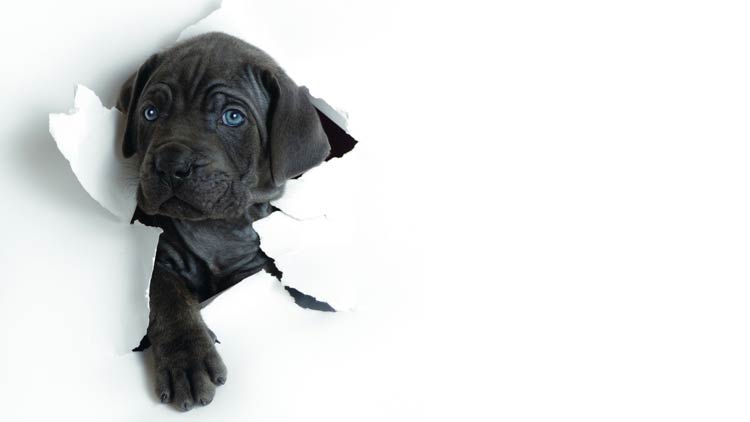
Recommended
- The smartest dogs
- The tallest dogs
- The most aggressive dogs
- The oldest dogs
- Pets
- Dogs
- Cats
- Wild cats
- The fastest animals
- The fastest birds
- The largest eagles

